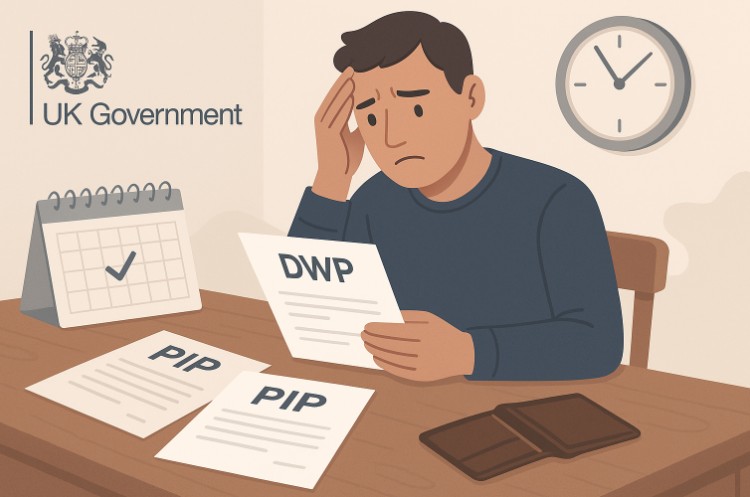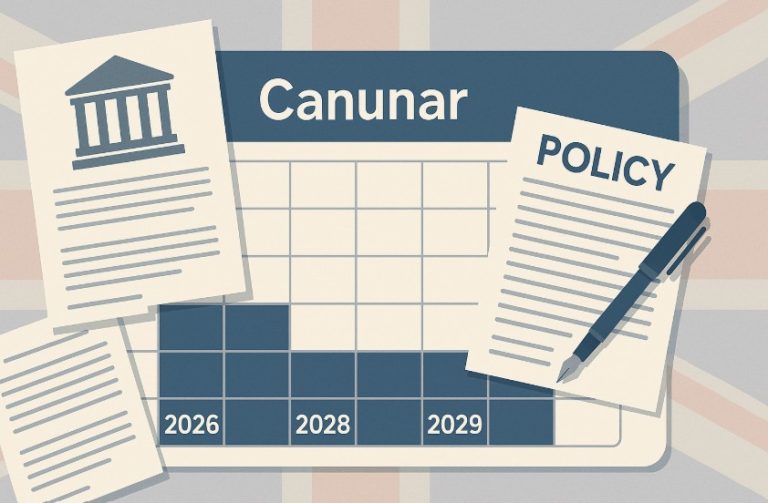Disability Living Allowance (DLA) can provide essential financial support for families raising children with autism.
As autism affects each child differently, the care and mobility needs may vary significantly. This guide explores how DLA works, who qualifies, how much can be claimed, and how to apply effectively in 2025.
What Is Disability Living Allowance (DLA) And How Does It Support Children With Autism?

Disability Living Allowance (DLA) is a tax-free benefit for children under 16 who need extra help because of a disability or health condition such as autism. It helps parents or carers manage additional care and supervision costs that arise from the child’s daily challenges.
For children with autism, DLA can help cover costs linked to personal care, safety supervision, or mobility support. The allowance recognises that children with autism often need constant guidance and structured support beyond what other children their age require.
There are two main components of DLA:
- Care Component – For children who need help with personal care or supervision.
- Mobility Component – For children who have difficulty walking or need support to move around safely.
A child can qualify for one or both components, depending on the level of need identified through assessment.
Who Is Eligible To Claim DLA For A Child With Autism In The UK?
Eligibility for DLA depends on the child’s level of need rather than the diagnosis alone. A formal autism diagnosis is not required, but evidence of how the condition affects the child’s ability to carry out daily activities is essential.
To qualify, the child must:
- Be under 16 years old at the time of the claim.
- Need more care, attention, or supervision than a typical child of the same age.
- Have had these additional needs for at least three months and expect them to last for six months or longer.
- Be living in England or Wales at the time of application.
Children who are nearing the end of life due to a life-limiting condition may qualify for faster access and higher rates of DLA.
For children living in Scotland or Northern Ireland, applications should be made for Child Disability Payment or Disability Living Allowance for children in Northern Ireland, respectively.
Eligibility For Children Living Abroad
In some cases, children living abroad may still be eligible for DLA if:
- They live in the EU, Switzerland, Norway, Iceland, or Liechtenstein and need help with daily living.
- They are abroad for medical treatment.
- They live with a parent who is a member of the armed forces stationed abroad.
Residency Requirements
To be eligible, the child must have lived in England, Scotland, or Wales for a minimum period depending on their age.
| Child’s Age | Minimum Time Lived in UK |
| Under 6 months | At least 13 weeks |
| 6 months to 3 years | At least 26 of the last 156 weeks |
| Over 3 years | At least 6 of the last 12 months |
Some exceptions apply to children of armed forces families, refugees, or those under humanitarian protection.
What Are The Current Care Component Rates For Children With Autism In 2025?

The Care Component of DLA is designed for children who need help with daily activities such as eating, bathing, dressing, or constant supervision due to safety concerns. The amount depends on how much support the child needs throughout the day and night.
DLA Care Component Rates For 2025
| Care Level | Weekly Rate | Criteria |
| Lowest Rate | £29.20 | Child needs extra help for part of the day or night |
| Middle Rate | £73.90 | Child needs frequent help during the day or constant supervision during day and night |
| Highest Rate | £110.40 | Child requires supervision both day and night or has a terminal illness |
How The Care Component Is Assessed?
The assessment looks at how often and how much help a child needs. Parents must describe the kind of support required during a normal day. This can include:
- Help with dressing, bathing, or eating.
- Constant supervision to prevent harm or injury.
- Support with managing anxiety, meltdowns, or communication difficulties.
What Qualifies A Child For Each Care Rate?
- Lowest Rate: For children needing occasional help or supervision during the day.
- Middle Rate: For children who need frequent help or night-time supervision.
- Highest Rate: For children who require continuous supervision both day and night or who are terminally ill.
Children with autism often qualify for the middle or highest rate because of continuous supervision requirements and the need for structured daily support.
What Are The Current Mobility Component Rates For Autistic Children In 2025
The Mobility Component helps parents with the cost of supporting a child who struggles to move around safely, either due to physical or behavioural challenges related to autism.
DLA Mobility Component Rates For 2025
| Mobility Level | Weekly Rate | Criteria |
| Lower Rate | £29.20 | Child can walk but needs guidance or supervision when outdoors (age 5+) |
| Higher Rate | £77.05 | Child has severe walking difficulties or behavioural issues preventing safe movement (age 3+) |
Age Requirements For Mobility Component
- Lower rate can be claimed when the child is 5 years or older.
- Higher rate is available for children aged 3 or older.
How Autism Affects Mobility Eligibility?
Autism can impact mobility in several ways. A child might be physically capable of walking but unable to do so safely due to:
- Limited awareness of danger when outdoors.
- High risk of bolting or running into unsafe areas.
- Severe sensory sensitivities causing distress in public spaces.
- Behavioural difficulties requiring constant supervision.
Children who meet these criteria may qualify for the higher rate mobility component, even without a physical impairment.
How To Apply For DLA For A Child With Autism?

Applications for DLA must be made by the child’s parent, guardian, or carer. The process requires careful completion of forms and submission of evidence to support the claim.
How To Obtain A DLA Application Form?
You can apply for DLA by:
- Printing the form from the official GOV.UK website.
- Calling the Disability Living Allowance helpline on 0800 121 4600 to request a printed form.
- Using Relay UK (18001 0800 121 4600) or British Sign Language video relay if needed.
Applicants should complete the form as soon as possible, as payments cannot be backdated.
Information Required In The Application
Applicants must provide:
- Details of the child’s condition and how it affects daily living.
- Medical evidence from healthcare professionals such as paediatricians, psychologists, or occupational therapists.
- Reports from teachers or special educational needs coordinators.
- A description of the child’s typical day highlighting their care and supervision needs.
Formal Diagnosis And DLA Applications
A formal autism diagnosis is not mandatory to claim DLA. However, parents must clearly explain the impact of the child’s difficulties on daily life and provide supporting documentation to strengthen the claim.
How Is DLA For Children With Autism Paid Out?
DLA payments are usually made every four weeks, directly into the claimant’s bank or building society account. The payment schedule helps families manage ongoing care and support costs efficiently.
If a payment date falls on a bank holiday, the payment is made earlier, and subsequent payments continue as normal.
Payments can also be made weekly in advance for those who qualify under specific circumstances, such as terminal illness or financial hardship.
Can You Claim Carer’s Allowance Alongside DLA For Your Child With Autism?
Parents or guardians caring for a child who receives the middle or highest care rate of DLA may also qualify for Carer’s Allowance. To be eligible, the carer must:
- Spend at least 35 hours per week caring for the child.
- Earn less than the income threshold set by the Department for Work and Pensions.
- Not be in full-time education.
Carer’s Allowance can provide additional financial support to families managing full-time care responsibilities.
What Are Common Challenges And Tips When Claiming DLA For Autism?

Applying for DLA can be complex, particularly when describing the needs of a child with autism. It is important to provide accurate, detailed information to ensure the Department for Work and Pensions (DWP) understands the full extent of the child’s care requirements.
Common Challenges
- Difficulty explaining invisible needs such as communication issues or sensory sensitivities.
- Underestimating the level of support provided daily.
- Lack of medical documentation to support the claim.
Helpful Tips
- Keep a daily diary describing the child’s care and supervision needs.
- Include professional reports, school feedback, and evidence of interventions.
- Clearly describe situations where the child’s safety is at risk.
- Reapply or request a mandatory reconsideration if the initial claim is rejected.
What Are The 2025 Updates Or Changes To DLA Rates For Children With Autism?
For 2025, the DLA rates remain as follows:
- Care Component: £29.20 to £110.40 per week
- Mobility Component: £29.20 to £77.05 per week
There have been no major policy changes to DLA eligibility or structure, but rates are reviewed annually in line with inflation and government budget adjustments. Parents and carers are advised to check the official GOV.UK website for any rate updates or guidance on how to maintain or renew existing claims.
Conclusion
Claiming DLA for a child with autism can significantly ease the financial and emotional burden of providing specialised care. The key takeaway is that eligibility is based on need, not solely on diagnosis.
Providing detailed evidence and understanding the assessment criteria can increase the likelihood of a successful claim.
FAQs About DLA Rates for Autistic Children
Will my child qualify for DLA without a diagnosis of autism?
Yes. A child can receive DLA based on their needs even if they do not have a formal diagnosis.
Is DLA backdated if my application is successful?
No. DLA is not backdated. It begins from the date the DWP receives your form or when you request it (if returned within 6 weeks).
How long does a DLA claim decision take?
Decisions usually take up to 3 months, but delays can occur if additional evidence is needed.
Can my child lose DLA if their condition improves?
Yes. DLA is subject to review and can be adjusted or stopped if the child’s condition changes.
How often is DLA reviewed for children with autism?
Reviews vary, but typically occur every few years, depending on the expected progression of the child’s condition.
Can you get both the care and mobility components?
Yes. A child can qualify for both components if they meet the criteria for each.
Does getting DLA affect other benefits?
Receiving DLA can help increase entitlement to other benefits like Carer’s Allowance, Universal Credit, or tax credits.






